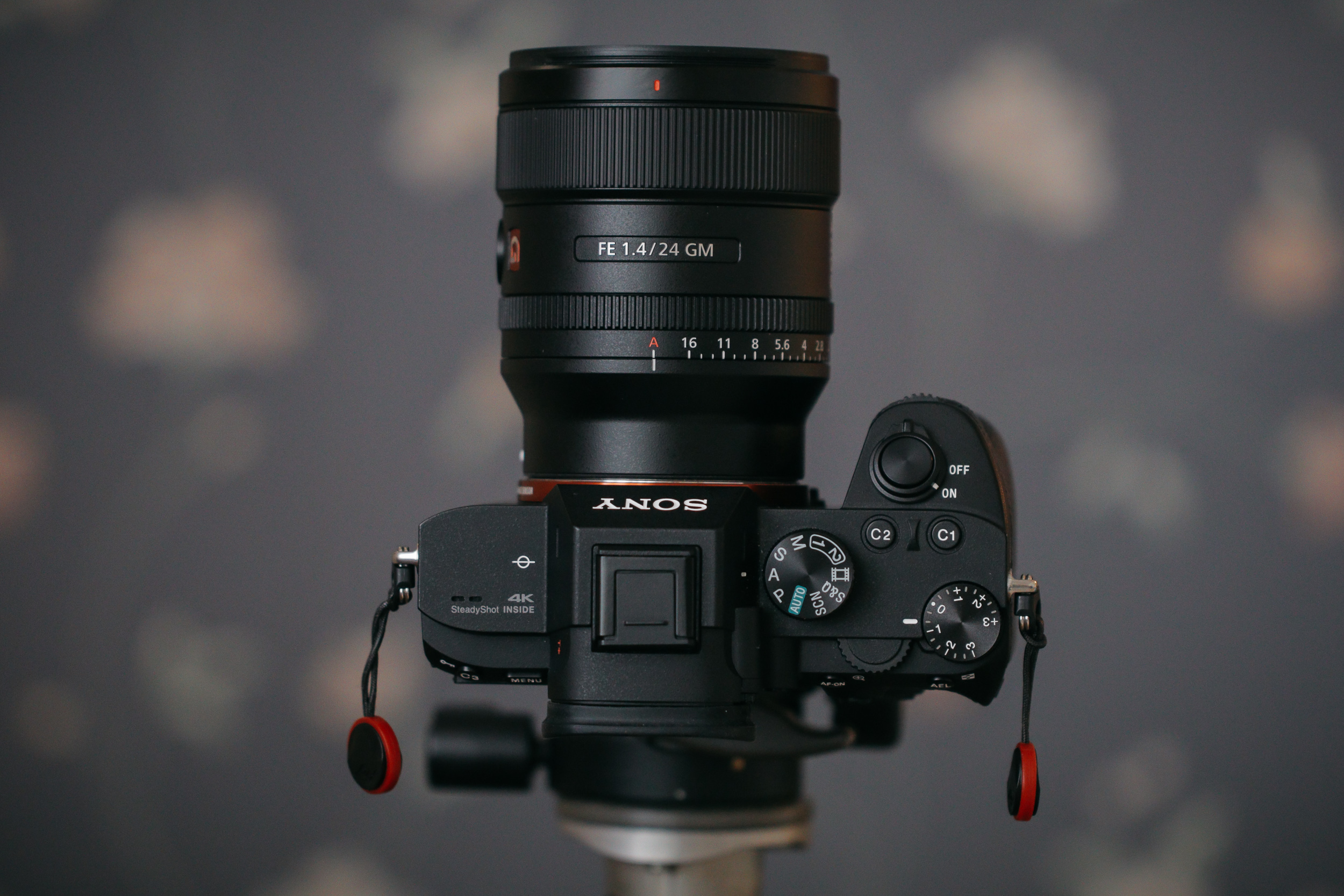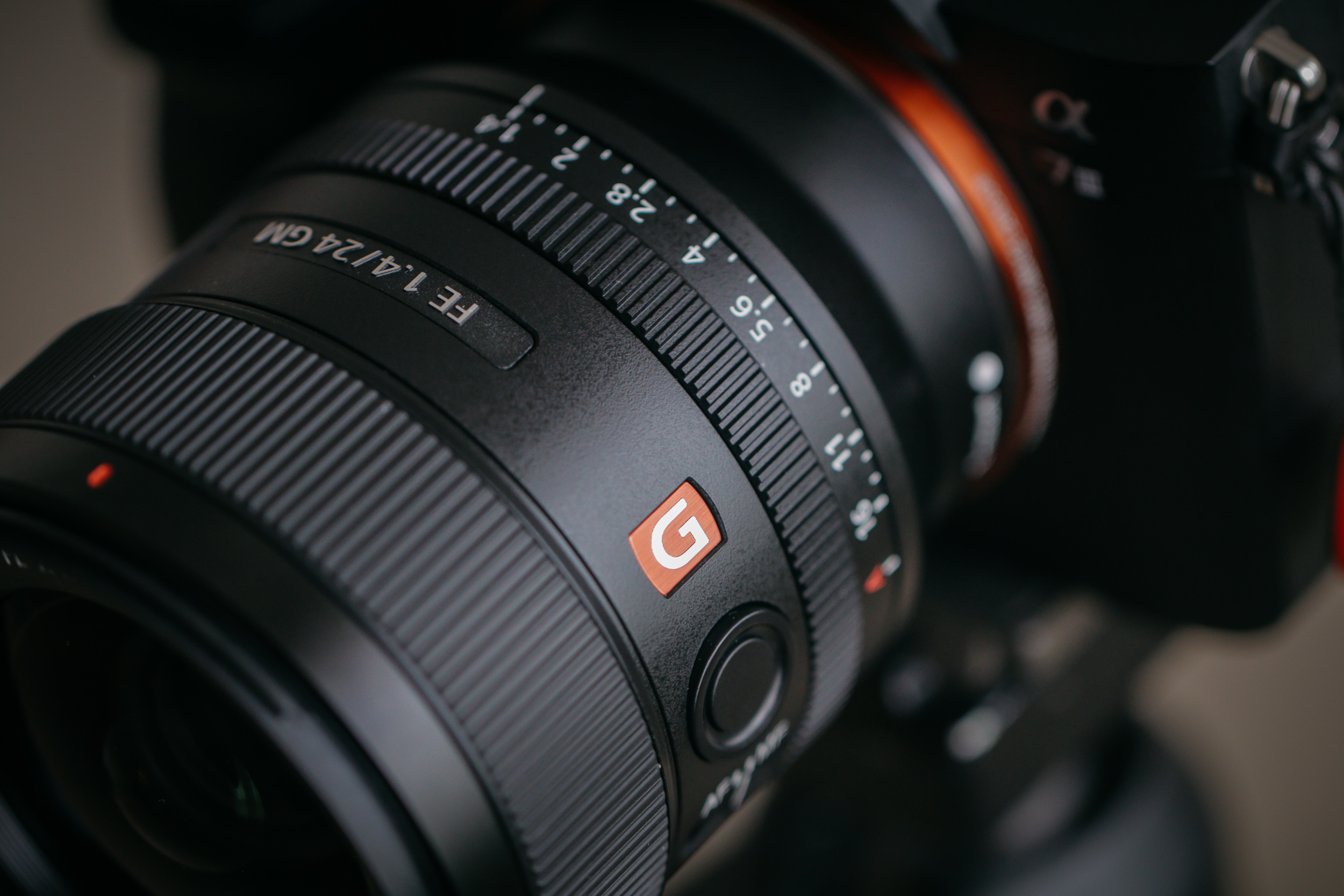The newly released Sony 24mm f/1.4 GM is creating quite a buzz. It’s been called a unicorn. It’s being compared to the Loxia 25mm f/2.4 and the Batis 25mm f/2…solid company indeed. While I think it can be valuable to delve into detailed optical comparisons (and justifiable at this price point), the 24 GM stands out to me from a practical standpoint and that is what I want to focus on here.
I’ve been shooting with the Sony a7III for a few months now, and I’m dipping my toes slowly into the FE lens universe. The first native FE lens that I purchased was the diminutive and impressive Sony 28mm f/2. The 28/2 is extremely small and lightweight, very sharp, and has excellent autofocus performance. It’s a very appealing lens for a hybrid (photo/video) shooter, anyone who does gimbal work, street shooters, or anyone who wants a very lightweight kit or low profile. Great little lens. All of that said, I found myself spending much more time with the Zeiss 55 f/1.8. As impressive and versatile as the 28/2 is, I just wasn’t consistently thrilled with my images from it. I had previously owned the lovely Canon 24mm f/1.4L, and maybe I was missing the extra stop, or the wider field of view, the shorter minimum focus distance, all of the above? It’s as if Sony could read my mind…enter the 24 GM.
Feature Set - Versatile and user friendly
As a member of Sony’s excellent GM series, the 24 GM sports some very welcome features including outstanding build quality and weather sealing. The 24 has a AF/MF switch, a customizable focus hold button, an aperture ring, and selection switch that allows you to turn off click stops on the aperture ring. Manual focus operation is “drive by wire” but the MF ring has a linear response, which allows for smooth and consistent manual focus. This is extremely welcome, and in my opinion, very well implemented. The manual focus functionality and feel is as good as any autofocus lens that I’ve used. Autofocus performance is outstanding as well. AF operation doesn’t feel snappy, but it gets where it needs to quickly, quietly and smoothly. I’d read in forums that focus breathing is minimal, but I don’t find that to be the case (wishful thinking maybe). I would say focus breathing is about average and as expected. All in all, very impressive, an excellent feature set, and excellent performance all around.
And then there’s the handling. Sony managed to pack GM build and f/1.4 optics into 445g. What!? Consider that the Canon 24L II weighs 650g and the Sigma 24 ART (FE) is a pinch heavier at 665g. The result is a beautifully handling lens that balances very nicely on the a7 series cameras. This is sort of a subjective thing, but it’s really a big deal to me. For instance, I love the Canon 35mm f/2 IS. It’s an optically solid lens, not setting any records, but damn it handles beautifully on the camera and it’s easy to carry. These days I’m more dad-tog than anything, and a system that is easy to carry on a camera strap or in a bag is a big consideration when I’m heading out the door. This was a primary driver for my switch to Sony, and I’m pretty thrilled to be able to carry a 24 f/1.4 without a significant sacrifice to handling and weight.
Let’s talk optical performance
With the feature set and the size and handling in a 24mm f/1.4, I would already be thanking Sony even if the optical performance was just decent. Every optical design requires some compromise, and the 24 GM is no exception, but the formula that Sony settled on here is really appealing to me, and I think it will suit many photographers (possibly with the exception of the most critical landscape shooters and other specialists). To be honest, as I’ve grown as a photographer, I’m not as discriminating about optics as I once was. Maybe that is because most modern lenses are just damn good. For me there is a threshold of acceptability, and once a lens is over that threshold, I don’t worry so much about chasing absolutes.
It quickly becomes obvious what Sony was prioritizing with the 24GM design as you view the images that it produces. Sharpness wide open is very very good across the frame, and out of focus rendering (blur and highlights) is quite outstanding. Out of focus highlights are smooth and round even when stopped down a bit thanks to 11 curved aperture blades. The compromise here is that sunstars will not be as well defined due to the very circular shaped aperture even when stopped down, There is some vignetting at wide apertures, but it’s not as pronounced as on the Canon 24L II. Distortion is very well controlled, in stark contrast to the 28/2 (see below). There is also some noticeable chromatic aberration and fringing at wide apertures, but it is reasonably well controlled for a lens of this type. Flare performance seems to be a controversial topic with this lens, and honestly I haven’t had enough time shooting into the sun to fully test it. Personally, I’m not the type of person that minds some flare. Based on what I’ve seen, I would put flare performance at about average for a wide/fast/AF/pro level lens. There is certainly some flare, but it can be mitigated with some shifting of angles, and it’s not unacceptable for my use. Another area that Sony seems to have prioritized is coma performance, important for astrophotography. Again, I haven’t been able to test this due to cloud cover and city lights, but results from around the web seem to indicate very very good coma performance.
One interesting side note, that I ran into while playing with this lens is that the electronic front curtain shutter (EFCS) can have a detrimental effect on rendering at very high shutter speeds. Out of focus rendering is especially affected. This can be seen as low as 1/500 and is easily apparent around the max shutter speed of 1/8000. Check out this post at philipreeve.net for a great explanation of this phenomenon. This is something to be aware of when shooting at wide apertures in daylight.
Sharpness comparison vs the 28mm f/2
I’m not a pro at this, but I did a little sharpness comparison to the 28 f/2. The takeaway for me is that the 28 is really damn good, but the 24GM is a little bit sharper, especially in the corners. Both lenses are really impressive here on the 24mp a7III. A higher megapixel body, such as the a7rIII may reveal a bit more. Also, my crops were a little large, so the comparison image ended up being pretty huge.
Download full size image here.
Focal Length Comparison vs the Sony 28mm f/2
For those who are in the position that I was in, considering the significant jump from the 28mm f/2 to the 24mm GM, I’m including this focal length comparison. The 28/2 has some significant barrel distortion, so I’ve included examples of the 28mm with and without correction.
Sony 24mm GM at f/1.4
Sony 28mm FE @ f/2.0 - No correction
Sony 28mm FE @ f/2.0 - Distortion corrected
The verdict - Yeah, I like it.
At times it can feel like camera companies completely ignore features and lenses that so many of us would like to see (every Canon user in the world probably knows this feeling well). While the 24 GM isn’t a lens that’s going to be everything to everyone, it’s a 24 f/1.4 with a very welcome and sensible set of compromises that I think will please many people looking for a fast/wide lens for event photography, low light, astro, music/performance arts, etc. The optics, build quality and handling are beyond what I was expecting even as a former Canon 24 f/1.4L II owner. Dedicated landscape photographers using the Sony FE system may prefer the manual focus Loxia 25mm f/2.4. Overall, the 24 GM is a huge win…outstanding optics and performance in a compact size, and at a very competitive price point. For my use, this is THE best autofocus 24mm lens on the market. Practical probably isn’t the first word that comes to mind when one thinks “24mm f/1.4” and “GM”, but this lens is very sensible and usable. If you like wide/fast lenses, I have no doubt that the 24 GM can become a workhorse for you, whether you’re a dad-tog, wedding photographer, or you’re shooting sweaty musicians in horribly lit dive bars.
From a personal standpoint, this leaves my Sony kit (not counting adapted lenses) with the 24GM and the 55 f/1.8. What’s next? The FE 85? Hold out for a 135 GM? We shall see. :)
Pros:
- Size and weight for a 24mm f/1.4 (35mm format) lens
- Handling on the a7 series
- Autofocus performance is reliable, fast, and quiet
- Manual focus functionality is outstanding for an AF lens
- GM build quality and weather sealing
- Sharpness wide open (and in general)
- Out of focus rendering (blur and out of focus highlights)
- Excellent coma performance
Could be better:
- Some chromatic aberration and fringing at very wide apertures
- Sunstars are compromised as a result of curved aperture blades
- Flare resistance is good, but not great
- It’s important to be aware of artifacts caused by Sony’s electronic front curtain shutter
Image Samples
I will update this review and add more samples as I continue to shoot with the 24 GM.
Sony 24 f/1.4 GM @ f/1.4
Sony 24 f/1.4 GM @ f/1.4
Sony 24 f/1.4 GM @ f/1.4
Sony 24 f/1.4 GM @ f/1.4






